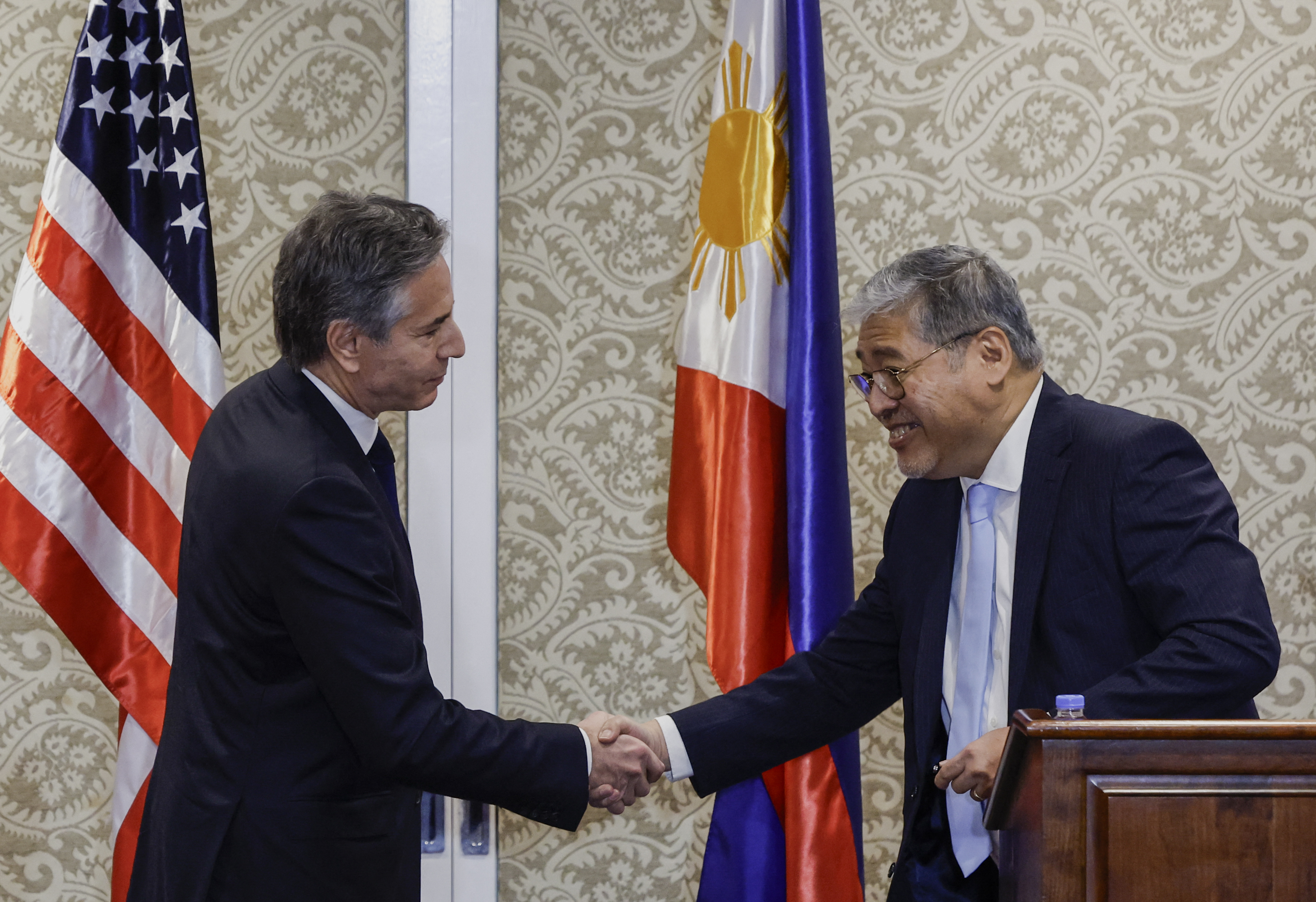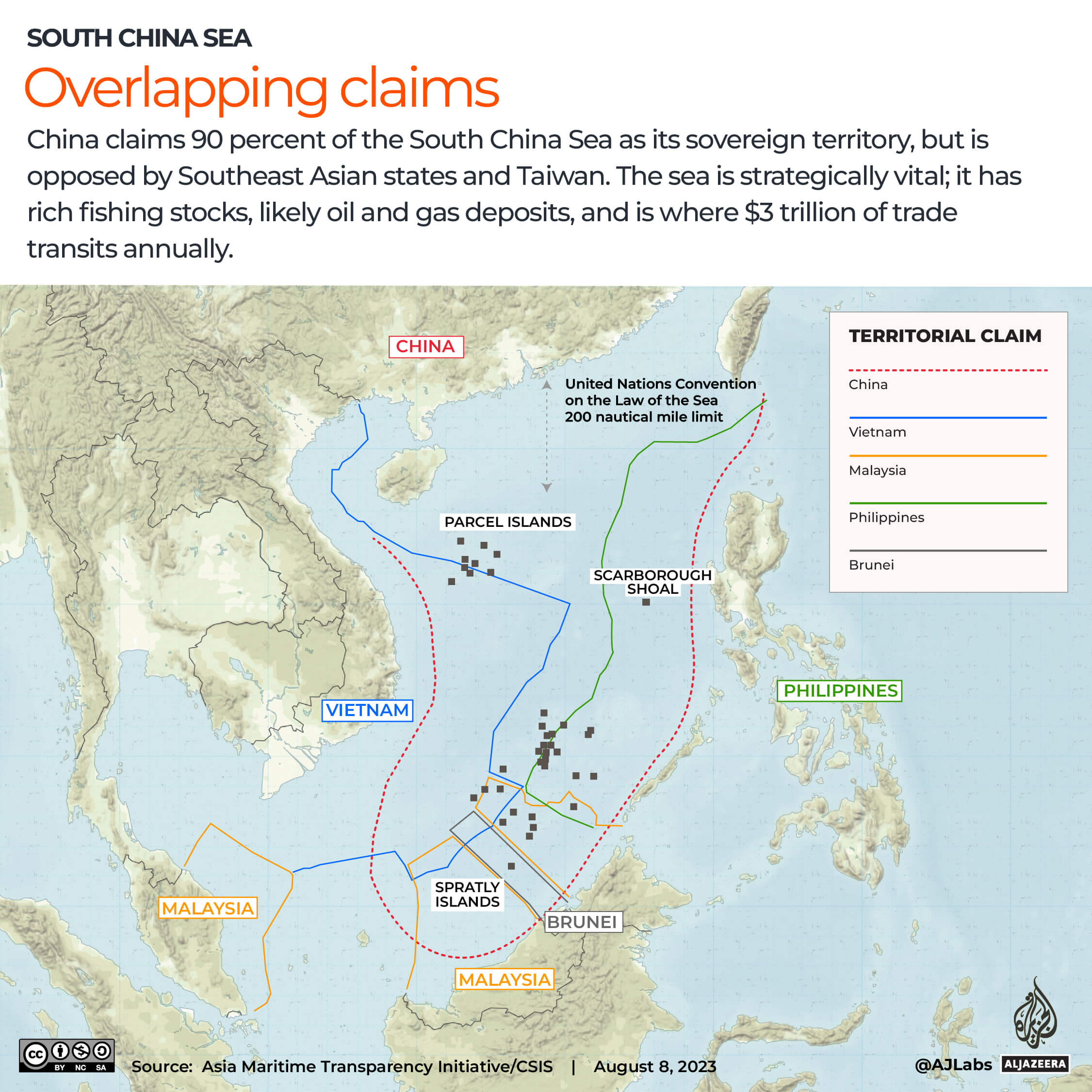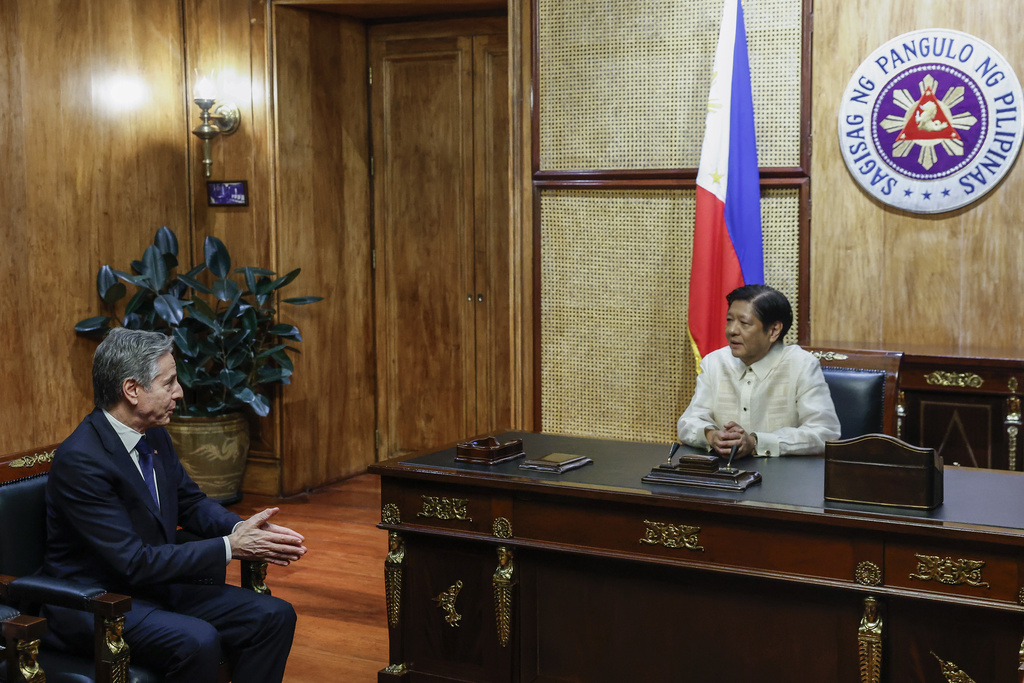
China has lashed out after the US secretary of state pledged that his country stands ready to back the Philippines, Beijing’s regional rival.
Antony Blinken promised on Tuesday during a trip to Manila that Washington retains an “ironclad” commitment to defend the Philippines. The United States has been deepening diplomatic and military contacts with its ally recently as tension with China rises.
Beijing promptly responded to the US official’s statement, insisting that the US has “no right” to interfere in the South China Sea, where Beijing and Manila have competing territorial claims.
Tension has risen in recent months, with incidents including a collision between Philippine and Chinese vessels near disputed reefs.
“These waterways are critical to the Philippines, to its security, to its economy, but they’re also critical to the interests of the region, the United States and the world,” Blinken said at a joint news conference with counterpart Enrique Manalo.
Several countries in the region maintain competing territorial claims to the waters of the South China Sea. China, however, claims almost the entire area.

Pawn
China, which has accused Washington of using the Philippines as a pawn, quickly sought to hit back.
“The United States is not a party to the South China Sea issue and has no right to interfere in maritime issues that are between China and the Philippines,” said foreign ministry spokesman Lin Jian.
US military cooperation with the Philippines “should not harm China’s sovereignty and maritime rights and interests in the South China Sea, let alone be used to prop up the Philippines’ illegal position”, he added.
Reporting from Manila, Al Jazeera correspondent Barnaby Lo said Blinken had been clear to note that only an armed attack against the Philippines would invoke the 1951 Mutual Defense Treaty sealing Washington’s obligation to defend its ally.
China, he signalled, had not engaged in any armed attack, deploying what analysts call “grey zone tactics” using “water cannon and military-grade lasers”.
Meanwhile, the US had been helping the Philippines to “shore up its defence capabilities,” making the country the largest recipient of US military aid in the Asia Pacific from 2015 to 2022.
‘Hyperdrive’
Ties between the Philippines and China have soured amid the recent rise in maritime confrontations, especially around the Second Thomas Shoal, which lies about 200km (124 miles) from the western Philippine island of Palawan and more than 1,000km from China’s southern Hainan island.
Manila has accused China’s coastguard of a policy of aggression. Beijing has maintained that Philippine vessels are intruding in its territory.
Meanwhile, there has been a marked improvement in relations between the US and the Philippines since President Ferdinand Marcos Jr came to power in 2022.
Meeting the head of state on Tuesday following his talks with Manalo, Blinken said relations between the two countries were now in “hyperdrive”.

In the past year, Manila has nearly doubled the number of its bases accessible to US forces, including three new sites facing Taiwan, which is also resisting pressure from Beijing, which claims the island state as its own.
Military exercises featuring US and Philippine forces have widened lately to include joint air and sea patrols over the South China Sea and close to Taiwan. China has viewed these war games as provocations.
US President Joe Biden is due to host Marcos and Japanese Prime Minister Fumio Kishida at a summit in Washington in April to discuss economic ties and the Asia Pacific region.







